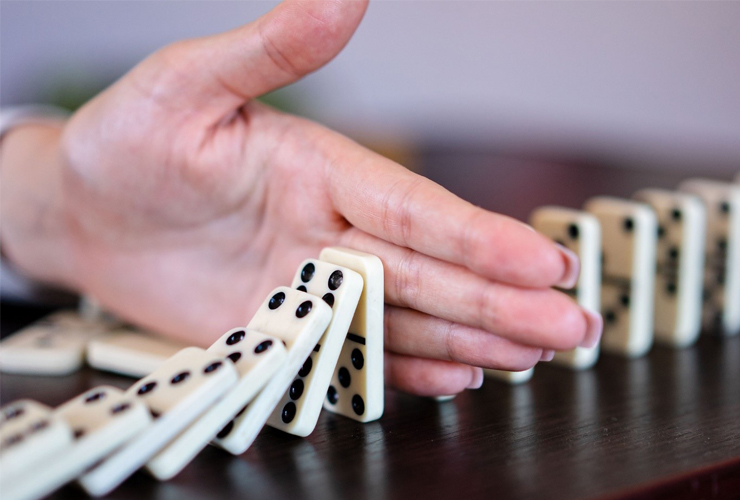Everybody has biases. It’s a normal part of the human experience. It can be as benevolent as believing your hometown hockey team is the best. Or, in its more extreme forms can lead to violence, discrimination and degradation.
Though some of us are aware of certain biases, many are lodged deep within our subconscious and can involve how were view gender, race, religion, sexual orientation, body shapes and more.
These unconscious or implicit biases may lead to saying or doing something distressing, cruel, sexist, ableist or racist without meaning to do so. While most people stand up against overt prejudices within themselves and others, they may be unaware that they have these biases and you cannot fix something that you don’t know is there.
So how do you recognize implicit biases? First, you have to understand how your brain works.
Brains are great at recognizing patterns and associations. When you have a negative experience, your brain remembers what happened to prevent a future occurrence. Great when you are fighting off a warring tribe and need to remember where the pointy part of the spear goes. Not so great when you live in an intercultural world with an unfortunate history of denigration against innocent people. These negative societal viewpoints have been reinforced through a lack of understanding and exposure and television, movies and stories.
Even the most well-intentioned person’s brain has picked up some negative connotations by simply living in Canada.
Picture a scientist. What is your first thought? Most likely, you imagine an Albert Einstein look-a-like. What about top-tier basketball players? Maybe your mind’s eye is conjuring up Michael Jordan. That is your unconscious bias at work. How about somebody from the ghetto? I doubt
you were thinking of a Jewish Venetian in the 16th century.
So, what if your brain has these associations? It seems relatively benign, right? It’s not like you actually believe that only old, white men can be scientists. True, but unless you address them, then those biases seep into the real world.
Two quick examples? Studies have shown that hiring practices are just as discriminatory today as in 1989, with black and Latina women experiencing the brunt of it. According to this study, black people are more likely to be rejected when renting an Airbnb.
How to Identify Unconscious Bias
Not knowing what you don’t know sounds like a paradox. But identifying unconscious bias requires a deep dive into your own thoughts.
Because implicit bias is a subtle force, easy to mistake and ignore. You may even be on the streets marching for Black Lives Matter or in memory of the missing indigenous children. Yet still have a negative association with both groups at the back of your mind.
So how do you figure out where your biases lie?
I suggest you start with the Project Implicit Test created by Harvard University researchers. It evaluates what implicit biases you may have in over 90 subjects. Each test takes about 15 minutes or less to complete and will give you a snapshot of how you truly feel about a subject.
Once that is complete, sit down and think about it. You may even want to create a journal to write down your thoughts.
Then you must also take the time to examine your gut feelings about people, things and situations. Are you being fair, or is your discomfort born from old stereotypes and prejudice? Do some research on different cultures. Find the realities and ignore the stereotypes.
Even though people are affected by their cultural background, each person is an individual and may not fit into a box.
If you find yourself surrounded by people of the same race, gender, religion or whatnot and realize you don’t have any relationships with people outside of this, you may want to examine why.
Sit with it. Meditate on it. Think about it. Why do you do the things you do? Why do you think the way you think? How much of it are your own beliefs, and how much was created by a culture rife with systematic oppression? Are you closing yourself off to wonderful experiences?
It is incredibly difficult and even painful to examine and self-reflect on why you feel or act a certain way. But dismantling the old negative biases is necessary to move toward a more inclusive world.
Once you figure out where your unconscious biases are, you can move forward and address them.
How to Overcome Unconscious Bias
Implicit biases stay around because our surroundings reinforce them. Popular culture is a huge villain in this case. But just because you see it on TV and read about it in books doesn’t mean it is right.
Take those biases you identified and pinpoint what exactly shaped them. Do you see how the dominant society has fuelled these prejudices?
Getting rid of them is not an easy task, but it is simple:
- Have meaningful interactions with people from diverse backgrounds;
- Research other cultures and belief systems on your own using resources created by people from that segment of the population;
- Challenge yourself and step out of that protective bubble;
- Push back against the default assumptions.
- Do what you can to make ambiguous situations less so;
- Call out people who are treating others unfairly;
- And make an effort to remain objective.
It won’t happen overnight, but those unconscious biases will fade as you put yourself in different situations and meet different people.
And if you can’t get rid of implicit biases completely? At least you are aware of them and can work on them.




